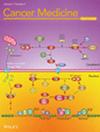The Oncogenic Role of UBXN1 in Gastric Cancer Is Attributed to the METTL16-Mediated m6A Methylation and Histone Modifications
Abstract
Background
Multiple epigenetic regulatory mechanisms are crucial in tumorigenesis and development. However, the synergistic relationship between N6-methyladenosine (m6A) and histone modifications in regulating gene expression of gastric cancer (GC) requires further investigation.
Results
Here, based on the microarray, RNA-seq, and survival analysis data, the m6A methyltransferase METTL16 was identified as a potential tumorigenic factor of GC. The silence of METTL16 suppresses the malignant phenotype of GC cells, and the NF-κB pathway was activated. By using the weighted correlation network analysis (WGCNA) and integrating RNA-seq and MeRIP-seq data, it was found that METTL16 is significantly positively correlated with UBX domain protein 1 (UBXN1). Furthermore, through the MeRIP-qPCR and dual-luciferase reporter assays, we found that knocking down METTL16 reduced the m6A modification level of the UBXN1 coding sequence in GC. Interestingly, the silencing of METTL16 also downregulated UBXN1 expression by promoting H3K36me3 modification at the UBXN1 promoter. Subsequent investigations found that the silencing of METTL16 upregulated the expression of the major H3K36me3 methyltransferase SETD2 in GC cells by methylating the m6A site in the mRNA coding sequence of SETD2.
Conclusions
Our findings demonstrate the spatio-temporal regulation of UBXN1 expression in GC cells by METTL16 through a combination of transcriptional and post-transcriptional mechanisms. The synergistic interplay of these various epigenetic mechanisms provides new prospects for tumor diagnosis and precision treatment.


 求助内容:
求助内容: 应助结果提醒方式:
应助结果提醒方式:


